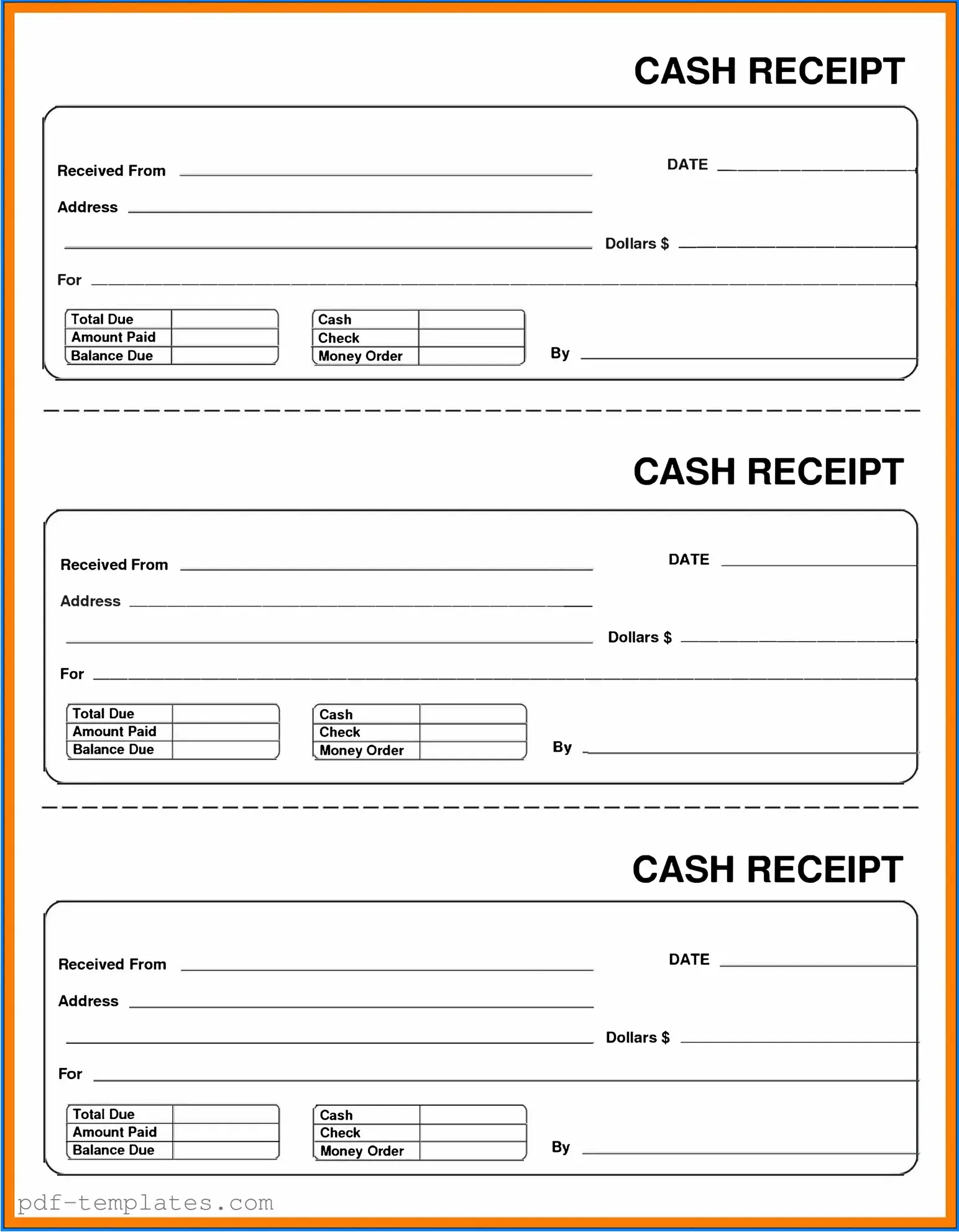The Cash Receipt form is quite similar to the Invoice. An invoice is a document that a seller provides to a buyer, detailing the products or services rendered along with the amount owed. Both documents serve as proof of a transaction. However, while an invoice requests payment, a cash receipt confirms that payment has been received. This distinction is crucial for accounting purposes, as it helps businesses track income and manage cash flow effectively.
Another document that shares similarities with the Cash Receipt form is the Sales Receipt. A sales receipt is typically issued at the point of sale and serves as immediate proof of purchase. Like the cash receipt, it acknowledges that payment has been made. However, sales receipts are often used in retail environments and may include additional details like sales tax, discounts, and return policies, making them more comprehensive for consumers.
Next, consider the Payment Voucher. This document is used to authorize payment to a vendor or supplier. Similar to a cash receipt, it confirms that a payment has been made. However, a payment voucher usually includes details about the reason for the payment, such as invoices being settled or reimbursements being processed. This makes it particularly useful for businesses managing multiple payments.
The Deposit Slip is another document that resembles the Cash Receipt form. A deposit slip is used when depositing cash or checks into a bank account. It serves as a record of the transaction, similar to how a cash receipt confirms payment. However, deposit slips are primarily used in banking transactions, while cash receipts are more common in retail or service industries.
Then there’s the Acknowledgment of Receipt. This document is often used in various business contexts to confirm that a party has received goods or services. Like a cash receipt, it serves as proof of a transaction. However, an acknowledgment of receipt may not always include payment details, focusing instead on the receipt of items or services.
The Credit Memo is also comparable to the Cash Receipt form. A credit memo is issued to indicate a reduction in the amount owed by a customer, often due to returns or billing errors. While a cash receipt confirms payment received, a credit memo signifies that a payment has been adjusted or refunded. Both documents play a vital role in maintaining accurate financial records.
Understanding the nuances of financial documents is crucial for maintaining organized transactions. Professionals in various industries must ensure that all records, including receipts and vouchers, are meticulously documented to avoid discrepancies. For beauty industry professionals looking to renew their licenses, it’s vital to manage documentation uniformly. This is where the All California Forms come into play, providing essential resources to ensure compliance and streamline the renewal process.
Another similar document is the Receipt for Payment. This is often used in various transactions, especially in service industries. It serves as confirmation that a payment has been made, much like a cash receipt. However, a receipt for payment may not always include detailed information about the transaction, focusing instead on the payment itself.
The Remittance Advice is also worth mentioning. This document is sent by a customer to a supplier, indicating that a payment has been made. Similar to a cash receipt, it serves as proof of payment. However, remittance advices are often used in business-to-business transactions, providing details on what invoices are being paid, which is not typically included in a cash receipt.
Lastly, the Statement of Account can be compared to the Cash Receipt form. A statement of account summarizes all transactions between a business and its customer over a specific period. While a cash receipt documents a single transaction, a statement of account provides a broader view of the customer's financial interactions with the business. Both are essential for maintaining clear financial records, but they serve different purposes.
